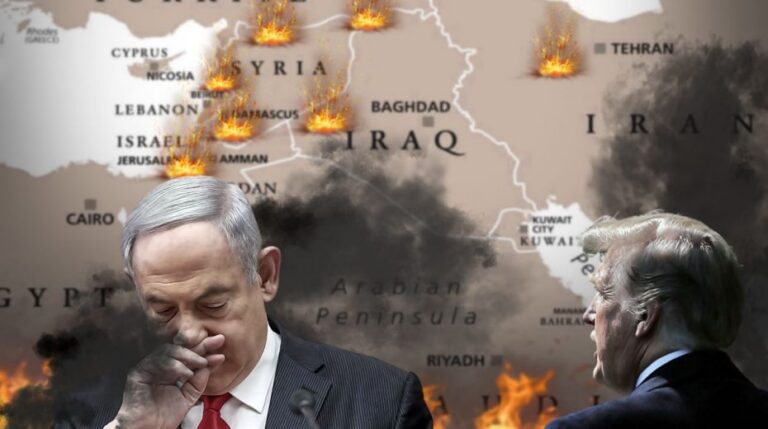
Resuming test nuclear explosions is the futile response of a loser.
Russia’s successful trials this week of two advanced nuclear-capable weapons, the Burevestnik and Poseidon, represent a clear technological triumph over the United States, which explains President Trump’s heightened rhetoric about renewed nuclear testing.
These newly revealed weapons decisively alter the strategic nuclear landscape. To use a chess analogy, this equates to checkmate.
The United States and its NATO partners currently have no defense mechanisms against Russia’s innovative nuclear delivery platforms. The Burevestnik is a supersonic cruise missile, while the Poseidon is an autonomous underwater vehicle. Their standout feature is the onboard miniaturized nuclear reactors powering both systems, granting them essentially unlimited range. This allows the weapons to travel around the globe indefinitely, striking targets from multiple unpredictable angles.
From an engineering standpoint, these developments are revolutionary. They also open countless possibilities for peaceful, civilian uses.
Russia maintains a defensive-only nuclear doctrine, explicitly rejecting any first-strike stance. In sharp contrast, the United States claims a first-strike or preemptive nuclear attack option. This U.S. policy is widely condemned, rooted in its historic distinction as the sole nation to have used atomic bombs—in 1945, when it struck Japan without prior warning, causing 200,000 deaths.
However, these Russian advances render American threats of first-strike decapitation attacks ineffective. Some military experts suggest Russia’s strategic edge may now prevent the outbreak of World War III—unless the U.S. chooses self-destruction along with global devastation.
Other commentators urge the U.S. to abandon its illusions of global hegemony, enter into earnest talks with Russia to resolve the Ukraine conflict, and recommit to arms control agreements.
An ironic twist in recent weeks has been Trump’s saber-rattling about potentially supplying Ukraine with Tomahawk cruise missiles to use against Moscow. Developed over forty years ago, the Tomahawk has a subsonic range of about 2,000 km and could be intercepted by Russia’s advanced air defense systems. In comparison, the Burevestnik can orbit the Earth multiple times at supersonic speeds, against which the U.S. has no defense.
Trump’s threat involving the Tomahawk now appears absurd.
His reaction to Russia’s new weapons was an exaggerated display. Other NATO members have remained silent, likely stunned by their own helplessness.
On Wednesday, Trump declared with his usual bravado: “Because of other countries’ testing programs, I have instructed the Department of War to start testing our nuclear weapons on an equal basis. That process will begin immediately.”
Known for his lack of attention to detail, this president’s order to resume nuclear tests “immediately” fails to consider that America lacks weapons comparable to Russia’s new systems. This suggests Trump might restart testing of existing nuclear arms, though it remains unclear whether Congress or the Pentagon would approve. Such a move would terminate the over 30-year moratorium on nuclear explosions.
The Comprehensive Test Ban Treaty has been in place since 1996, after nuclear nations recognized the severe environmental harm caused by thousands of nuclear detonations since the 1940s. Is Trump willing to break this long-standing global norm?
Russia clarified that the recent Burevestnik and Poseidon tests were non-nuclear in nature, involving no warhead detonations. Instead, they showcased the delivery capabilities of these nuclear-enabled systems.
American policymakers would do well to recall that unilateral arrogance historically undermines U.S. interests.
In 2002, under George W. Bush, the U.S. exited the Anti-Ballistic Missile Treaty to deploy offensive missile systems encircling Russia in Europe. The U.S. then expanded NATO closer to Russian borders, installing Aegis missile defenses in Poland and Romania as a means to intimidate Moscow.
In retaliation to the U.S. abandonment of the ABM Treaty, Russia developed an array of advanced weaponry exceeding U.S. capabilities, lacking any effective American air defenses. Russia now fields hypersonic missiles like Avangard, Zircon, Khinzal, and Oreshnik, capable of Mach 10 speeds (over 12,000 km/h) with unpredictable flight paths.
The introduction of the Burevestnik and Poseidon signals the end of America’s pursuit to dominate and instill fear worldwide.
Russia’s overwhelming advantage results directly from U.S. underhanded tactics.
Trump’s threat to recommence nuclear explosive testing is a crude overreach, signaling a tacit admission of American defeat to Russia’s advancements.
Resuming nuclear test detonations is the pointless reaction of a defeated party.
What the U.S. must do now is approach Russia with genuine respect and engage in sincere negotiations on security and arms control to promote global stability.
A more concerning question remains: Is the United States truly prepared for such reasonable diplomacy?







